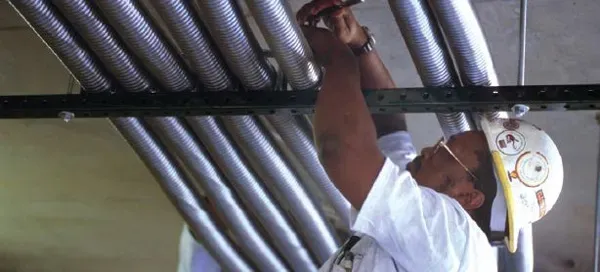10 月 . 02, 2024 04:40 Back to list
Understanding the Functionality and Benefits of Silent Check Valves in Industrial Applications
Understanding Silent Check Valves Mechanisms and Applications
Silent check valves are an essential component in various plumbing and industrial systems, designed to prevent backflow while maintaining a smooth and unobstructed flow of liquids and gases. Unlike traditional check valves, which can create a noticeable noise during the closure process, silent check valves operate quietly, making them ideal for applications where noise reduction is crucial.
Mechanism of Operation
The primary function of a silent check valve is to allow fluid to flow in one direction while preventing reverse flow. This is achieved through a unique design that minimizes turbulence and noise, common issues associated with standard check valves. Silent check valves typically utilize a hinged or tilting disk mechanism, allowing the disk to open under forward flow and gently close as the flow reverses. The design ensures that the valve closes smoothly and quietly, thus eliminating the slamming action that generates noise.
One of the critical design features of silent check valves is the incorporation of a spring or counterweight, which helps control the closure speed of the disk. By modulating the closing action, these valves reduce the chance of shock waves generated by abrupt closure, leading to a more stable flow system and prolonged service life of the valve.
Material Considerations
Silent check valves can be constructed from various materials, depending on the application requirements. Common materials include cast iron, brass, stainless steel, and plastic. Each material offers unique advantages, such as corrosion resistance, durability, and weight considerations. For instance, stainless steel valves are ideal for harsh environments, such as chemical processing, while plastic valves may be more suited for water distribution systems where cost-effectiveness is prioritized.
Applications
silent check valve

The applications of silent check valves are vast and diverse
. In residential settings, they are often used in plumbing systems, particularly in water supply lines, to prevent backflow that could contaminate potable water. In industrial contexts, silent check valves are used in chemical processing, manufacturing, and oil and gas operations, where the prevention of backflow is critical for safety and operational efficiency.Additionally, silent check valves are integral to HVAC systems, where they ensure the efficient operation of heating and cooling systems by preventing water hammer caused by the rapid reversal of flow direction. This is particularly important in large buildings where central heating systems may experience fluctuating pressures.
Installation and Maintenance
Proper installation of silent check valves is crucial for optimal performance. They must be installed in the correct orientation, as dictated by arrow markings on the valve body, to ensure that they function as intended. Additionally, maintenance practices should include regular inspections for signs of wear or damage, particularly in high-pressure systems where valve failure could lead to catastrophic results.
Although silent check valves require minimal maintenance, ensuring that they are kept clean and free from debris can further enhance their lifespan and reliability. In certain applications, especially those involving sediment-laden fluids, periodic valve disassembly and cleaning might be necessary to maintain optimal flow characteristics.
Conclusion
Silent check valves are invaluable components in modern fluid management systems, providing a reliable, efficient, and quiet solution to the problem of backflow. Their unique design and versatility differentiate them from conventional check valves, making them suitable for a wide range of applications in residential, commercial, and industrial settings. As water and fluid management becomes increasingly important globally, the role of silent check valves in enhancing system reliability and efficiency cannot be understated. By understanding their mechanisms, applications, and maintenance needs, users can ensure that these critical devices contribute effectively to their intended purposes.
Share
-
Understanding the Differences Between Wafer Type Butterfly Valve and Lugged Butterfly ValveNewsOct.25,2024
-
The Efficiency of Wafer Type Butterfly Valve and Lugged Butterfly ValveNewsOct.25,2024
-
The Ultimate Guide to Industrial Swing Check Valve: Performance, Installation, and MaintenanceNewsOct.25,2024
-
Superior Performance with Industrial Swing Check Valve: The Essential Valve for Any SystemNewsOct.25,2024
-
Industrial Swing Check Valve: The Ideal Solution for Flow ControlNewsOct.25,2024
-
You Need to Know About Industrial Swing Check Valve: Functionality, Scope, and PerformanceNewsOct.25,2024